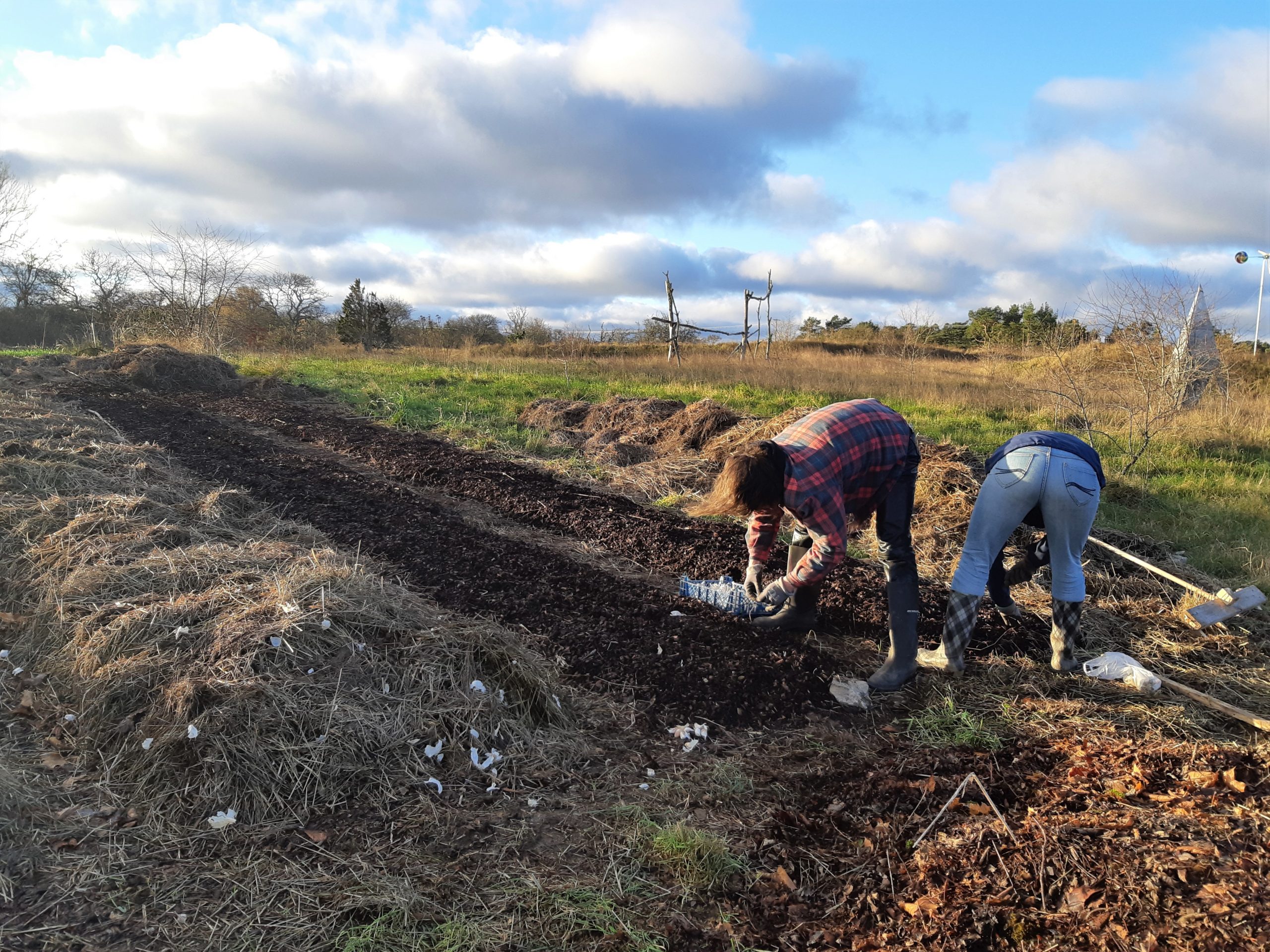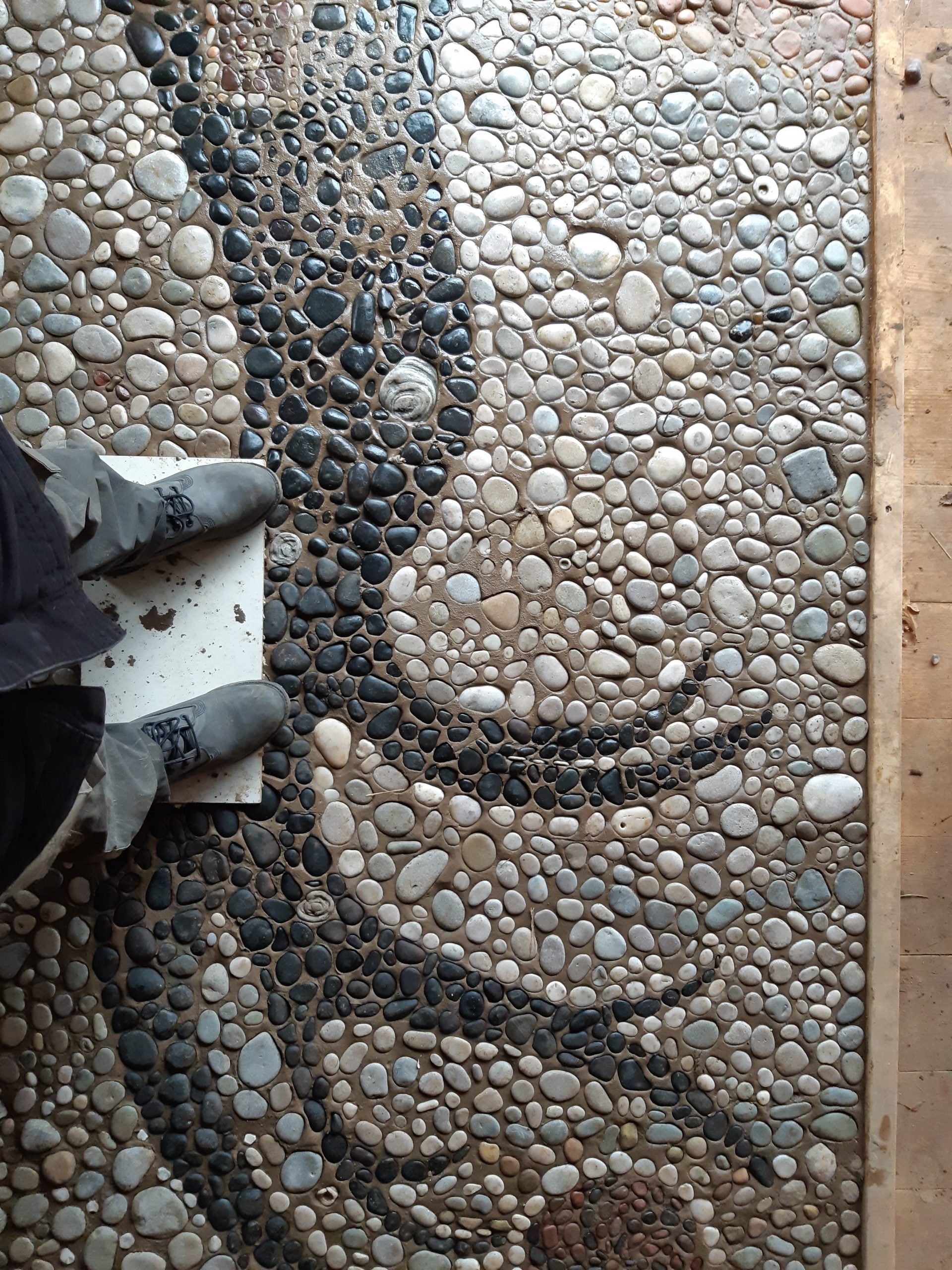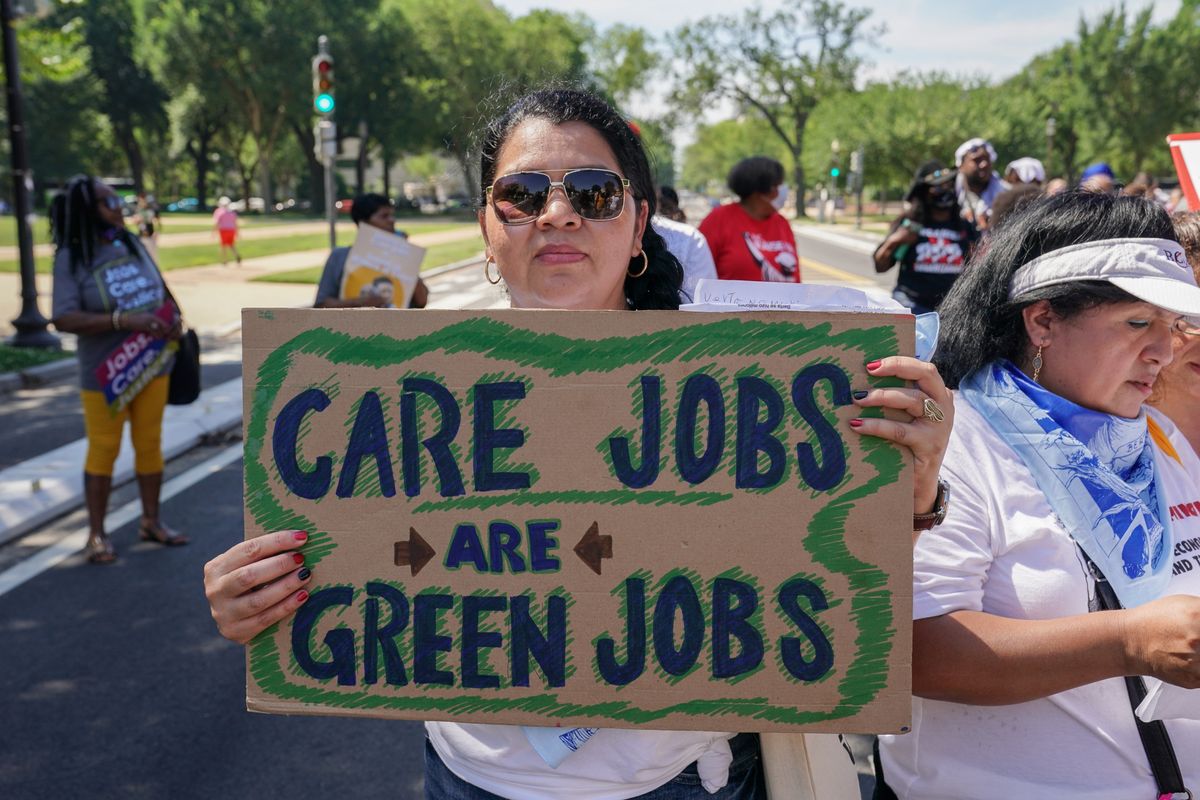By Angelica Wågström
The climate crisis cannot be solved merely by introducing large-scale renewable projects, since such solutions are neither sufficient nor socially just. An alternative strategy is care work, to mitigate climate change and increase human and environmental welfare. But what is care, and how is it enabled by energies?
For the last few years, I have been visiting and re-visiting a preschool and an ecovillage in Sweden. This has been part of my research, trying to understand how care is practiced and what energies are involved. Informed by the Feminist Green New Deal slogan “care jobs are green jobs”, I have noticed a need to explore in what ways care work can be “green”. While care is celebrated for its (often) low contributions to greenhouse gas emissions, it is mostly left at that. But could there be more to care than what it is not – a big emitter?
Recent publications within environmental humanities, science and technology studies (STS), and related fields are oozing with care, even more so post-pandemic. Although this is an important contribution to understanding how to create a world more fit to the humans and other nature living in it, the frequent referral to care – often without defining it further – risks diluting the term into “anything good”, encompassing so much that in the end it means nothing.
Often, I find the concept of care used either as merely a practical doing or only a moral disposition of general goodwill. But as long argued by political scientist Joan Tronto, care is both practical, hands-on work and a disposition with ethical and political implications. The concept of care, I mean, loses something when only one or the other is considered.
Lately, academic publications in the field of energy and environment argue for replacing individualist policies with an “ethic of care”. This leaves me to wonder how such a shift is going to be implemented in a neoliberal, capitalist world-economy. This economy is constructed to overuse people’s and planet’s abilities to care – as free labor in the domestic sphere, as cheap labor in recognized care and service sectors, as insecure labor in the growing “gig-economy”, or as dump sites for environmental pollution.
Just like greenwashing, I would suggest that something like “care-washing” is present in both business, politics and some academic publications. Merely stating that “we care for the environment/people” or “we should strive towards an ethics of care”, is insufficient when practices of care are not enabled, or the political conditions of care work and care receiving are not considered.
Care as a moral disposition provides an important contrast to the individualism of current neoliberal environmental and energy policies. However, such narrow perspective fails to acknowledge the material basis necessary to perform caring practices. My understanding of care is informed by the thinking of Tronto and Berenice Fisher, who in a text from 1990 describe how caring involves “certain ability factors, specific preconditions of caring activity”, for instance “time, material resources, knowledge and skill”. In her later work, Tronto (2017) argues for the political recognition of people as homines curans or “caring people”, outlining a societal model where material resources and time is allocated specifically to care, in contrast to neoliberal strategies of today.
In my research, I look at preconditions of care particularly in terms of energies. I write energies in plural, to highlight the multiple sources and forms of energies that facilitate caring practices. Energies are not merely that which runs through our cables, wires or windmills; as ecological economics and political ecologists have long observed, energy is also involved in human work. Energies are the metabolic processes fueled by the food we eat and enabling body (including mind) activities, the bonfire burning at the preschool excursion, direct sunlight allowing photosynthesis of plants, etc. Further, the emotional work maintaining and caring for the communities is also enabled by human energy. The energy involved in emotional work is noted by Catalina de Onís in Energy Islands, pointing towards the work carried out by energy justice activists.

Making use of direct sunlight when growing carrots at the preschool. Source: photo by author.
By “care work”, I am referring to both paid and unpaid care. Care is work of maintenance and repair, and can be directed towards humans, other nature, and even things. It includes looking after our emotional, physical and social well-being, and is practiced through varying proportions of emotional, physical, and intellectual work. Following political scientists Marian Barnes and Joan Tronto, there needs to be a consequentialist perspective on care. This means that care has only been given if care needs are actually fulfilled. And this is, I mean, what makes practices of care a political issue. In a community, it matters whose care needs are acknowledged as such and whose are not. It says something about who is recognised as a legitimate member of that community.
There are varying ways in which care needs can be met using energies, from long chains of energy technologies (e.g., fossil fuels, solar cells), to technologies of more local, less energy-intense character (e.g., spades, clothes, firewood). It is crucial to understand which practices are meeting care needs and therefore cannot be compromised, and which practices are merely fueling unsustainable lifestyles. To these ends, I am exploring what I refer to as energy practices of care, meaning practices of care and the energies involved in enabling them (see my forthcoming dissertation for further conceptualization).
The framework of energy practices of care is informed by research of “energy services” and “end states”, both focusing on what energies are used for, rather than a narrow view on energy as kilowatt-hours. Common examples of energy services are heating or cooling, clothes washing, or transportation, practices that can be done with very different types and amount of energy input (see e.g. Michael James Fell). Investigating energy practices of care can show how some of these energy services are meeting care needs, while others are not. As such, energy practices of care is a lens with which to analyze both the care stemming from energy services, and the energies enabling practices of care.
During my field visits, I have taken part in everyday activities, including caring practices such as dressing, feeding and comforting children, building nets around the preschool garden to protect the plants from deer, repaired a windmill, used a hoe to maintain the health of soil, baked cakes for the eco-village community, made fires in a fire-stove, and much more. What makes these practices care, in my use of the term, is that they all serve to maintain the health and wellbeing of individuals, the communities, and the non-human surrounding.

Caring for soil and community by small-scale farming. Source: photo by author.
When I look at environmental care, I am differing between caring for the environment and caring through it. For instance, by using the hoe I am caring for the soil and its creatures, in what STS scholar María Puig de la Bellacasa has called “soil care”. By the same practice, through the care for the environment I also care for the human community that depends on it, feeding on the vegetables growing in the soil. In a similar manner, I often consider care for things as ‘care for people through care for things’. In the example of cobblery, caring for broken shoes would be care for the person who will be using the shoes.
Making the distinction of caring for and caring through is important to understand the social justice aspect of environmental care (for instance, who is benefitting from caring for a forest area by conserving it, and whose livelihood might be hurt from it?). Care for people through the environment is differently prioritized depending on who the humans are that depend on this care. This is one reason why environments in areas where marginalized people live tend to be less well cared for than environments in areas of the more powerful, on both local and global scales. The care needs of the latter are simply more recognized. In projects of developing “green” energy technologies, it is not a coincidence that materials for “clean” batteries and solar cells are often extracted in areas of the most poor and marginalized: meeting these people’s care needs through environmental care is deemed less important than caring for environments and people elsewhere.
In my fieldwork I have found brilliant examples of energy practices of care that maintain the wellbeing of the communities. Such practices fulfil care needs by using types of energies that are neither destructive to local environments nor dependent on technologies produced through long chains of cheap labour. However, I also found examples of inequalities – or environmental injustices – tied to energy practices of care.
For example, there were instances in the ecovillage when efforts to reduce energy use by living simple (so called “voluntary simplicity”) met the care needs of some people while ignoring care needs of others. In my dissertation, this is exemplified with thermal comfort and possibilities of menstrual hygiene, two care needs (self-care, care for community members’ health) that some members found difficult to meet.
In what I interpreted as efforts to be close to a certain idea of nature as something almost untouched by humans and technology, private spaces with access to running water to, for instance, wash a period cup, were limited, as were heating technologies. Personally, I was often stiff by cold. This, I argue, means that while some individual’s care needs are met by the village design, others (e.g., some of those menstruating or more sensitive to cold) fitted less smoothly into the energy of care infrastructures. In other words, caring for the environment (for instance, minimising use of running water or heating technologies) could in these instances not translate into care for people.
Disability scholars and crip theorists such as Alison Kafer, have criticised parts of the environmental movement for ableist tendencies. Such “eco-ableism” is expressed for instance when environmental awareness is ascribed to only technologically unmediated contact with “wild nature”, which excludes someone who for instance depends on a wheelchair, hormones, or medicine. To counter eco-ableist tendencies within both the environmental movement and environmental and energy policies, a focus on care is crucial. What care needs do different people and other nature have? What is needed for communities to thrive and live well?
Starting from needs rather than wants, and arguing for a reduction in energy use, might sound like a call for a penurious, ascetic lifestyle. However, I argue that this is only the case if just a few people’s care needs are acknowledged as such while others needs are seen as excessive. Then, the latter will likely experience life as enforced simplicity or even (energy) poverty.
Therefore, care must be understood not only as that which is necessary for (some people’s) survival, but also for genuine, long-term well-being. For example, maintaining beauty and aesthetics is, I argue, an often forgotten aspect of community life and wellbeing. A beautiful environment is for many people calming, and beauty can thus be perceived as a care need, making cleaning and tidying an important infrastructure of care. Too often this infrastructural work is displaced onto those whose needs of a clean environment is deemed vain or excessive.

Creating beauty when building a mosaic floor. Source: photo by author.
Rather than speaking of energy use as “energy demand”, which reduces humans to consumers and environments to energy and material resources, I suggest starting from the other end: care needs. By shedding light on energy practices of care, we can gain insights in how varying care needs can be fulfilled using multiple forms of energies. Focusing on care needs rather than wants or projections of abstract future energy “demands”, can bring discussions of energy use and “care” into a more political discussion of justice.
Angelica Wågström is a PhD Candidate in Energy Humanities, working at the STS-division at Chalmers University of Technology in Sweden. She has a background in human ecology and environmental sciences.
—
Top image: Feminist GND Polling and Report: Care Jobs are Green Jobs. Source: https://wedo.org/feminist-green-new-deal-coalition-report-care-jobs-are-green-jobs/






